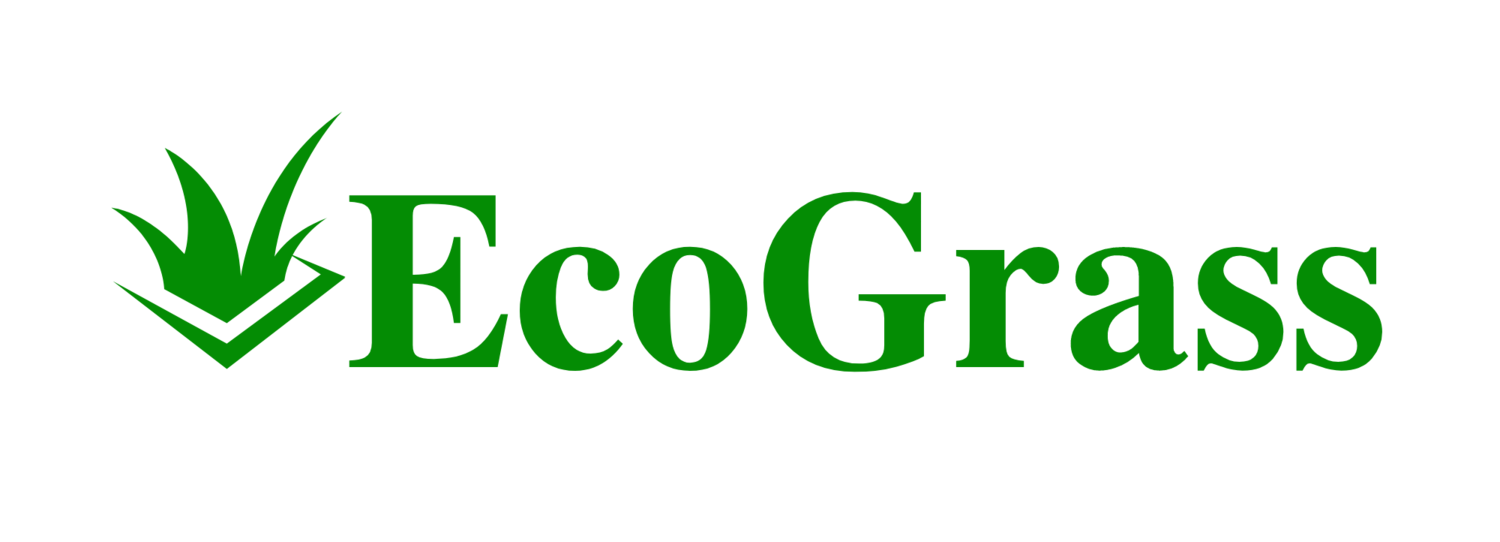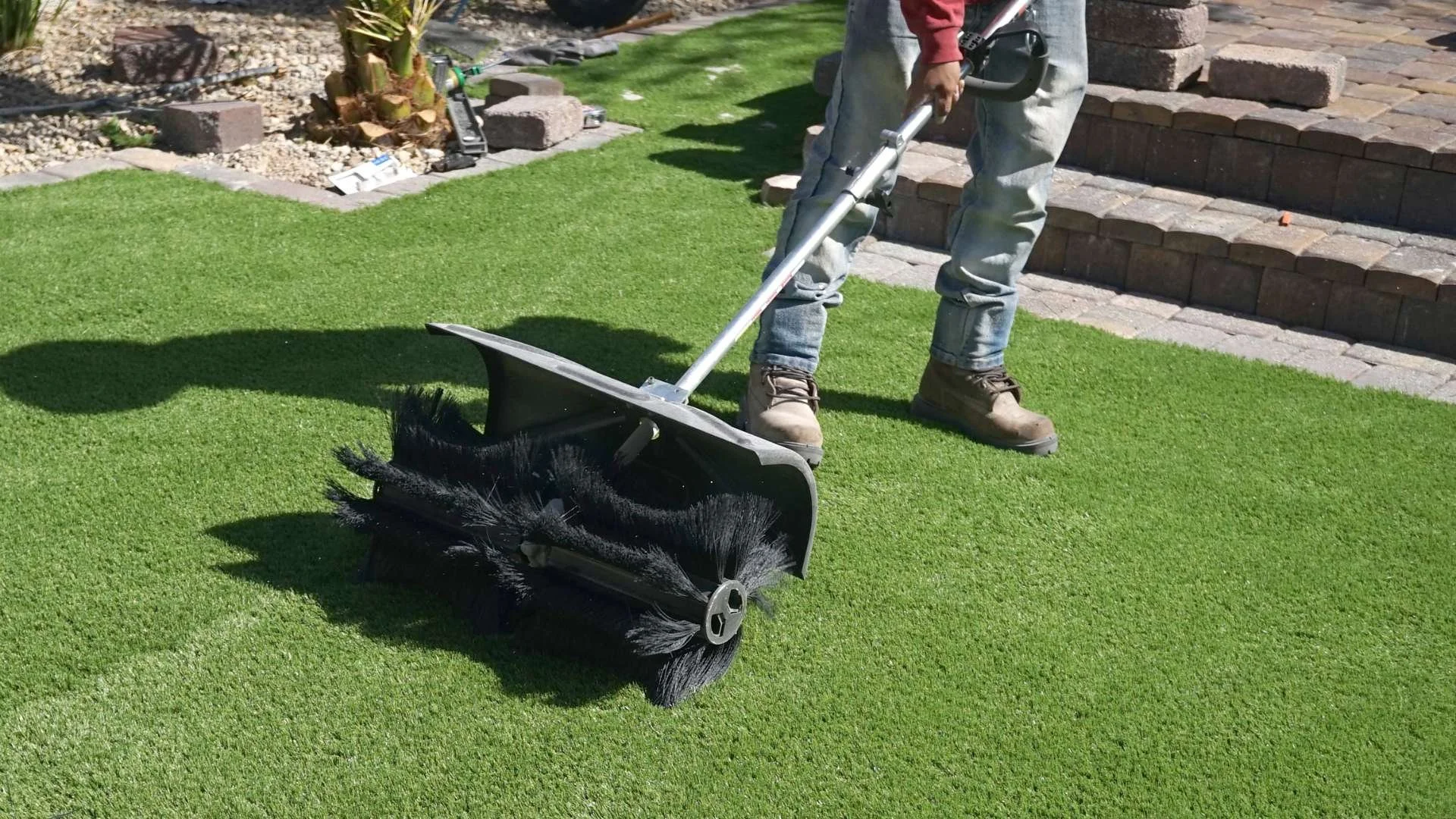Installing artificial grass on concrete is a practical solution to revitalize a stark patio or balcony into a vibrant, low-maintenance green space. Unlike natural grass, artificial turf doesn’t require soil, watering, or mowing, which makes it a suitable option for urban living and commercial spaces where gardening might be impractical. When you choose to cover concrete surfaces with artificial grass, you create a space that is both aesthetically pleasing and functional.
Before initiating the installation process, you need to ensure that the surface area is clean, smooth, and dry. This preparation is key to achieving a seamless and durable finish. Slight inclines for drainage are ideal, but if your concrete surface is flat, consider installing drainage holes to prevent water accumulation. Equipping yourself with the right tools and materials, such as turf adhesive, a sharp knife, and a straight edge, will help streamline the process.
Measuring the area accurately is vital as it determines the amount of artificial grass and adhesive required. Purchasing a little extra turf is recommended so you can trim the edges for a perfect fit. When cutting the artificial grass, take care to cut it cleanly along the desired line without damaging the backing material. Proper alignment and securing of the turf will ensure a stable and visually cohesive green surface that can withstand foot traffic and outdoor conditions.
Preparing the Concrete Surface
Before installing artificial grass on concrete, it's essential to prepare the surface properly. This preparation involves creating effective drainage, repairing any damage, and thoroughly cleaning the area to ensure a strong adhesive bond and a smooth, even appearance.
Ensuring Proper Drainage
To prevent water accumulation, confirm that the concrete has a slight slope away from buildings or structures for natural runoff. If water puddles are present, you'll need to create drainage to avoid waterlogging the turf.
Drainage Holes: Drill holes using a 16mm (5/8 inch) masonry bit and hammer drill at regular intervals, especially where puddles form.
Drainage System: Consider a more extensive drainage system if the whole surface collects water.
Repairing Cracks and Imperfections
Examine the concrete for damages:
Cracks: Fill in any cracks with concrete filler to create a smooth and even surface.
Uneven Concrete: If you detect uneven spots, use a self-leveling compound to level the surface.
Allow repairs to cure completely before proceeding.
Cleaning and Degreasing
Finally, ensure the concrete is free of debris, dirt, and grease:
Sweep the surface to remove loose debris.
Deep clean with a concrete degreaser to eliminate any oily spots or residues.
Rinse thoroughly and allow the concrete to dry, providing an optimal surface for the artificial grass adhesive.
Installation Process
Installing artificial grass on concrete transforms your space into a low-maintenance, green oasis. The key steps involve preparing the turf, securing it properly, and paying attention to details for a professional finish. Proper installation is crucial for the turf's longevity and appearance.
Cutting and Laying the Artificial Turf
First, measure the area where you're planning to install the artificial grass. Make sure to purchase a little extra turf for trimming and adjustments. When you have the right amount of synthetic grass, roll out the turf over the concrete surface. If needed, place a foam underlay under the turf for added comfort and drainage. Trim the turf using a sharp knife to match the shape and dimensions of the installation area.
Securing and Joining Sections
Glue is essential to secure the turf to the concrete. Apply an adhesive specifically designed for artificial grass along the perimeter and any seams where sections join. If joining sections of turf, ensure they are tightly abutted before applying joining tape and adhesive to prevent any movement over time. It's important to read the glue product's instructions—some adhesives require time to become tacky before placing the turf.
Finishing the Edges and Detail Work
The final touch involves detailing the edges for a clean look. Use a strong adhesive to glue down the edges of the artificial grass. Once all sections are secure, brush the turf with a stiff broom or a power brusher to fluff the blades and give them a natural look. This step also helps evenly disperse the infill sand if used, which adds stability and supports the grass fibers.

